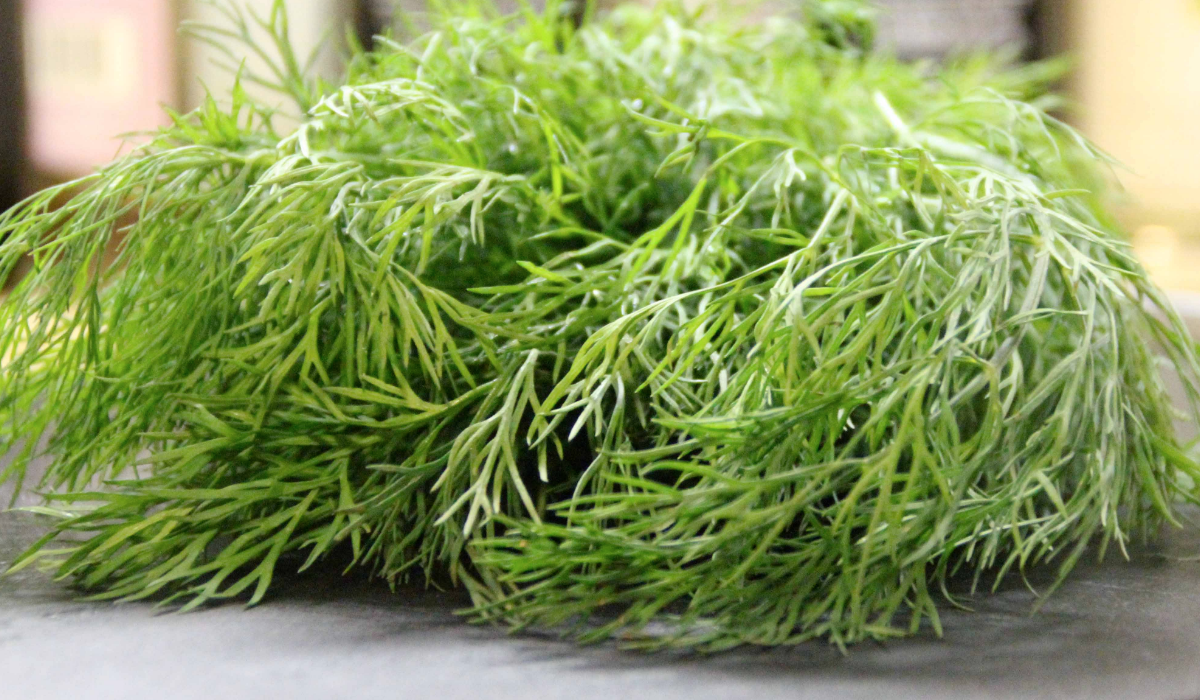
Dill (anethum graveolens) is a plant of the celery family whose fruits are traditionally used for the treatment of intestine-related and female diseases.
This plant grows annually in rich and well- drained soil in full sunlight. Due to the strong aroma of its leaves, dill is used to flavor a number of dishes such as soup, pickles, and fish dishes. The dried leaves are used as herb and the seeds of the plant are used as spice and to extract essential oil.
Apart from its edible usage, anethum graveolens is used in medicinal purposes extensively, but the medical component of the plant is derived from the fruits of the plant, which are not edible.
Here is a complete guide about anethum graveolens and its various medicinal uses.
Both the leaves and the flowers of dill are filled with nutrients and vital medicinal compounds. Fresh leaves of anethum graveolens contain a myriad of vitamins such as Vitamin A, B1, B2, B3, B5, B9, B12 and Vitamin C. In addition to this, it is also a good resource of fiber, calcium, potassium, iron, sodium, manganese, and copper.
Anethum graveolens is unique as it also contains two major groups of healing compounds:
- Monoterpenes: These have anti-bacterial uses and include limonene and carvone (1). They produce anti-carcinogenic effects in the body.
- Flavonoids: This is the largest group of nutrients up to date and they have anti-bacterial and anti-viral properties. Moreover, they help regulate menstrual cycles. They include vicenin and kaempferol.
Both the healing compounds are the causes of great health benefits due to their anti-bacterial and anti-microbial properties.
Recommended dosage
An appropriate dosage of anethum graveolens is dependent on a number of factors (2). Age, health and other such factors contribute to the difference in dosages for each group.
Benefits of anethum graveolens
Inflammation can be caused in many ways, such as injury or infection. The swelling and pain of the inflammation causes extreme distress to a patient. Research has shown that the usage of the oil of anethum graveolens results in the reduction of inflammation (1).
Vitamin C is a major component of the anethum graveolens. A 100 gm of dill includes 142% of Vitamin C, and this huge amount helps strengthen the bones and teeth and improve their overall health.
There is high potential in this herb to control the corticosteroid-induced diabetes. Research has shown that administering dill leaf extract reduced the concentrations of serum glucose and insulin, which can be helpful to combat this disease.
Chewing the seeds of anethum graveolens is the traditional alternative to chewing breath mints or gum. The difference is that there are no side effects to chewing dill seeds and it plays no part in destroying teeth, since it has properties of improving bone health.
The chemical compound monotrepenes that is present in anethum graveolens is an anti-carcinogenic compound. This compound secretes the enzyme glutathione-S-transferase, which successfully neutralizes the carcinogens like cyano-deratives, benzo-deratives and free radicals.
There are certain vitamins and flavonoids present in this herb that help speed up the production of hormones in the body and, as a result, produces a calming effect that fights insomnia and gives you a relaxing sleep.
Dill is known for its properties of anti-inflammation. This is why it is used for relieving the pain of diseases such as arthritis, rheumatoid arthritis, and gout.
Ingesting the extracts of anethum graveolens triggers the secretion of the chemical progesterone, which is the chemical that helps remedy fertility related problems and regulates menstrual cycles.
In Indian traditional medicine, hiccups and headaches were treated by drinking tea made out of dill leaves, or drinking the dill pickle juice.
The essential oils of dill include flavonoids and monoterpenes which have anti-congestive and anti-histaminic properties. Using the dill essential oil will clear the congestion that occurs due to coughs, allergies or histamine.
The basic cause of dysentery is fungal infections. The essential oils extracted from the roots of anethum graveolens are disinfectant in nature, so they are excellent for hampering the growth of fungal infections.
There are various other benefits of using dill, such as easing heartburn, remedying cold and flu, helping in stomach ailments, protecting from free radicals, acting as a relaxant and increasing urination to wash away the toxins from the body.
Side Effects of anethum graveolens
Anethum graveolens is safe for internal use, but when applied externally, it may cause irritation and photosensitivity. This can put you at a greater risk for skin cancer. If you do use the dill extract and externally, wear sun block to protect yourself (2).
There have been a number of reports of allergies to anethum graveolens, and it seems that there is a cross reactivity between anethum graveolens and plants in the carrot family such as coriander, fennel, aniseed, caraway, asafetida and celery. If you happen to be allergic to any one of the aforementioned substances, you might be sensitive to anethum graveolens as well as its extracts, and it is advised that you do not use the Dill supplements.
If you have diabetes, you need to watch out for your blood sugar, as anethum graveolens tends to lower the blood sugar of diabetic patients.
Using dill during pregnancy should be avoided as it can lead to miscarriages.
It is important to regulate your blood sugar when you have a scheduled surgery. Dill has the effect of lowering the level of blood sugar, so it is advised that you stop taking the dill supplements at least a week before your surgery.
anethum graveolens is found in various forms. The leaves are easily available as spices, the seeds and the extract of the plant can be found in the market as well.
Summary: Dill has a number of benefits and incorporating it into a regular diet is essential to keep healthy. It helps fight various diseases such as cold, arthritis, dysentery and diarrhea. Especially for females, dill is a great natural source of regulating menstrual cycles.
http://bodynutrition.org/dill/ http://bodynutritionorg.tumblr.com/post/147564144139
No comments:
Post a Comment